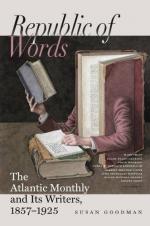In collecting these early flowers, one finds or fancies singular natural affinities. I flatter myself with being able always to find hepatica, if there is any within reach, for I was brought up with it ("Cockatoo he know me berry well"); but other persons, who were brought up with May-flower, and remember searching for it with their almost baby-fingers, can find that better. The most remarkable instance of these natural affinities was in the case of L.T. and his double anemones. L. had always a gift for wild-flowers, and used often to bring to Cambridge the largest white anemones that ever were seen, from a certain special hill in Watertown; they were not only magnificent in size and whiteness, but had that exquisite blue on the outside of the petals, as if the sky had bent down in ecstasy at last over its darlings, and left visible kisses there. But even this success was not enough, and one day he came with something yet choicer. It was a rue-leaved anemone (A. thalictraides); and, if you will believe it, each one of the three white flowers was double, not merely with that multiplicity of petals in the disk which is common with this species, but technically and horticulturally double, like the double-flowering almond or cherry,—the most exquisitely delicate little petals, seeming like lace-work. He had three specimens,—gave one to the Autocrat of Botany, who said it was almost or quite unexampled, and another to me. As the man in the fable says of the chameleon,—“I have it yet, and can produce it.”




